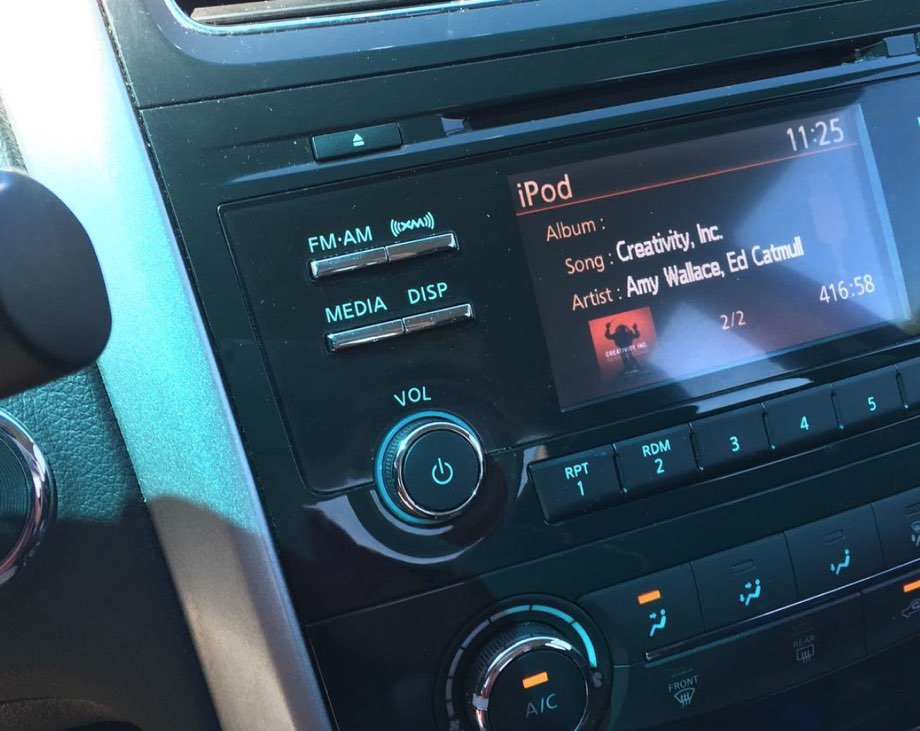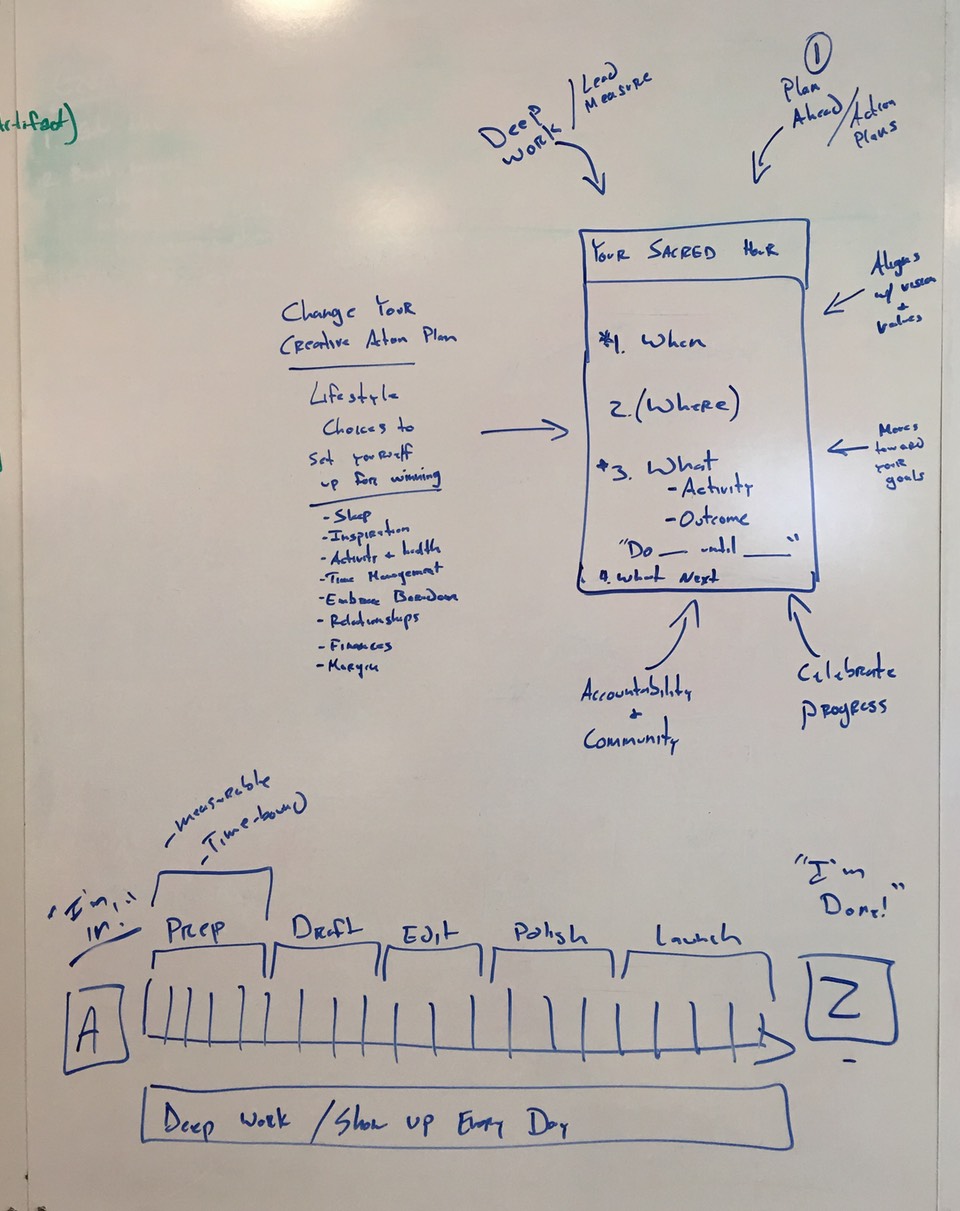
Creativity and business are both packed to the rafters with risk. If you’re trying to do your best creative work or if you’re building a business, then you’re going to have to take risks.
But they don’t have to be wild, all-in bets. And, you can have fun in the process.
* * *
Risk is part of creativity
Have you ever found yourself staring down the barrel of a project, and you say:
“This might not work.”
Hopefully that’s a common phrase for you. Because when you’re not sure if something will work, that’s when you know you’re on to something.
Perhaps the idea or the project itself won’t prove to be successful, but that’s okay. Merely trying something out that may or may not prove to be great is worth the effort.
Ernest Hemingway’s advice was to “write drunk, edit sober.”
Create without inhibition. Create without fear of failure; without mind for other people’s opinions; without fear of rejection; without feeling like an impostor.
Have fun.
As Derek Sivers writes in his book, Anything You Want:
Business is as creative as the fine arts. You can be as unconventional, unique, and quirky as you want. A business is a reflection of the creator.
Pay close attention to what excites you and what drains you. Pay close attention to when you’re being the real you and when you’re trying to impress an invisible jury.
Risk will always be a part of the creative process. Because creativity is not a science — it’s filled with objectivity that changes from within and without based on the weather.
There’s no sure fire way to make something awesome. There’s no proven formula to go viral. There’s no such thing as literal overnight success.
Get comfortable with risk. When you know that risk is just part of the game, it helps you in your fight to stay creative.
Moreover, if you can be comfortable with risk in your creative work, you will, in turn, be more comfortable with risk in your business.
That’s important because…
Risk is Part of Business
Five years ago, when I quit my job and began working for myself, I took the “leap” to writing full time.
It’s called a “leap” for a reason.
Going full-time with my writing was a risk.
I was standing at the edge of a cliff. There was a gap, and there was another cliff across from me. I had to leap from not-full-time and hope made it across to the other side.
Standing at the edge, there was no bridge that was going to come build itself. I had gone as far as I could with the time and the resources I had available to me. I could either remain there in that spot, or I could take a leap and hope to make it to the other side.
So many people get get to that same spot. That spot where they’ve gone as far as they can with the time and resources available to them. But then, once they’re there, they stop and wait.
Who knows what they’re waiting for. More time? More resources?
It’s (probably) not time or money that’s the biggest issue holding them back. I think it’s fear.
However, that’s not to say you should throw caution to the wind. When I took the leap into my full-time writing gig, I most certainly did my due diligence and was prepared financially. (Which is a topic worthy of its own book.)
You’ve got to make sure you…
Minimize Financial Risk
When I quit my job, I had:
- No kids, no debt, an emergency fund saved up, my wife had a part-time income.
- My website was already making some money ($1,000 / month).
- I also had a plan to front-load 90-days worth of income by having the membership subscription charge people quarterly instead of monthly.
The best-case scenario was obviously that I would be able to earn enough revenue to pay all our bills and keep writing full-time. Fortunately, that’s how things have turned out so far.
But the worst-case scenario really wouldn’t have been that terrible. If, after having given the writing gig my full-time attention for 90 full days without seeing any traction, I would have gone to get a part-time job somewhere and then returned to the drawing board.
Basically, if the membership model hadn’t worked out, it would have been embarrassing but not catastrophic.
Over the years, as I’ve slowly built a business around writing and publishing, I’ve continued to minimize financial risk by doing things like staying out of debt and moving at the speed of cash and saving up a business emergency fund.
But there is more at risk than just the financials themselves. You also want to make sure what it is you’re creating is actually of value to others. You want your creative endeavors to fly.
How can you do that?
Minimize the Risk of Failure
There are so many ways you can minimize the risk of your project failing. The way I know best is through consistently writing.
Writing helps you get your thoughts out onto paper. It helps you get your ideas in order. And it gives you assets you can use for your business and creative endeavors.
It’s also what you have to do first before you publish anything. Writing an article, a podcast outline, a video outline, etc. You’ve got to write if you want to publish content.
And, quite frankly, publishing content is one of the best things you can do to minimize the risk of your next big project being a flop.
By writing and publishing, you’re doing three huge things:
- Opening a feedback loop between you and your audience (the people who will buy from you, spread the word about your work, etc.).
- Giving away value and helping others.
- Establishing yourself as someone who is credible and who cares.
And so, yes, you minimize the risk of failure by showing up every day. It’s not about numbers, it’s about connections.
As Jeffery Feldman says (quoted from Austin Kleon in in Show your work!):
What you want is to follow and be followed by human beings who care about issues you care about. This thing we make together. This thing is about hearts and minds, not eyeballs.
Showing up every day, teaching what you know, and connecting with your audience by being honest is how you actually connect with folks.
Now that you’re comfortable with risk, it’s time to…
Celebrate Your Progress
When you’ve taken a risk, give yourself a high five. ?
Keep track of what you create, what you ship, what you sell, what you were expecting to happen, what actually happened, what worked, what didn’t work, etc.
I do this by journaling in Day One.
Celebrating progress keeps up your intrinsic motivation. It’s also an excellent way to keep track of your growth and lessons learned.
Because in a few months time, you’ll have forgotten all about that risk you just took because you’ll be on to the next one.
Which is why next week I want to share about how to set creative goals and actually make progress.
The risk part is just one big step. But then, after you’ve taken that initial leap — the first big risky move — what comes next is all the hard work of iteration.
Setting creative goals is also critical because you’ve got 100 ideas for inspiration. You need a goal so you know what to focus your time and energy on. Without creative goals, you’re like a wave in the ocean, being tossed to and fro with the wind.
* * *
This was part five in a series of articles I’ve been writing about creativity and entrepreneurship lessons learned after five years as a full-time self-employed writer. You can find the previous four articles here:
- Five
- Creativity and Entrepreneurship
- Consistency and Honesty
- Family Balance





